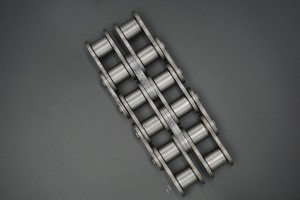Across industries, roller chains play a vital role in transmitting power and facilitating the smooth operation of machinery. However, roller chains are prone to cutting, presenting a significant safety risk and potentially costly downtime. In this blog, we’ll explore seven effective ways to secure roller chains and prevent unauthorized cutting, ensuring seamless operations and workplace safety.
1. Adequate facility security:
Implementing strong security measures, such as installing surveillance cameras, access control systems, and perimeter fencing, can stop malicious individuals from gaining unauthorized access to your facility. Maintaining a secure perimeter helps prevent potential roller chain cutting accidents and keeps workers and equipment safe.
2. Staff Awareness and Training:
It is vital that employees understand the importance of securing roller chains and the potential hazards associated with cutting. Regular safety training courses should cover the importance of maintaining a strong safety culture, emphasizing proper operation and maintenance practices. Ensuring that employees understand the consequences of roller chain cutting can significantly reduce the likelihood of such incidents occurring.
3. Implement physical barriers:
Combining physical barriers with strategic placement can effectively deter unauthorized access to roller chains. Utilize safety cages, barriers, and fences to limit access to sensitive areas. Additionally, combining motion sensors and sirens can notify personnel of any tampering attempts.
4. Regular maintenance and inspection:
Frequent maintenance and inspection of roller chains is essential to prevent potential leaks that could lead to cuts. Check the chain regularly for signs of wear, rust or loose parts. Lubrication at proper intervals can enhance roller chain performance and deter cutting attempts.
5. Mark the chain with permanent ink or etching:
Applying indelible ink or etching a unique identifying mark on the roller chain can act as a deterrent. These marks make it easier to identify tampered or stolen chains and deter thieves from trying to cut and remove them. Additionally, clearly visible markings provide a visual reminder to staff to regularly monitor the integrity of the chain.
6. Use security seals and locks:
The use of security seals and locks creates an additional layer of protection against unauthorized access to the roller chain. These devices help secure key access points, prevent tampering and reduce the chance of chain severing. Choose a tamper-evident seal that provides visible evidence of damage for quick detection of any unauthorized tampering.
7. Periodic security audit:
Conducting routine security audits is critical to identifying any potential gaps in the facility’s security protocols. These audits ensure compliance with established security measures and provide opportunities for continuous improvement. An up-to-date safety program coupled with regular audits can strengthen overall safety measures and significantly reduce the likelihood of roller chain cutting accidents.
in conclusion:
Preventing roller chain cuts requires a multidimensional approach combining physical barriers, employee awareness and regular maintenance protocols. By implementing these seven effective methods, you can protect your roller chain, reduce safety risks and ensure a safer work environment. Prioritizing industrial safety not only minimizes costly downtime, but also demonstrates a commitment to the well-being of employees and the company as a whole.
Post time: Jul-22-2023

